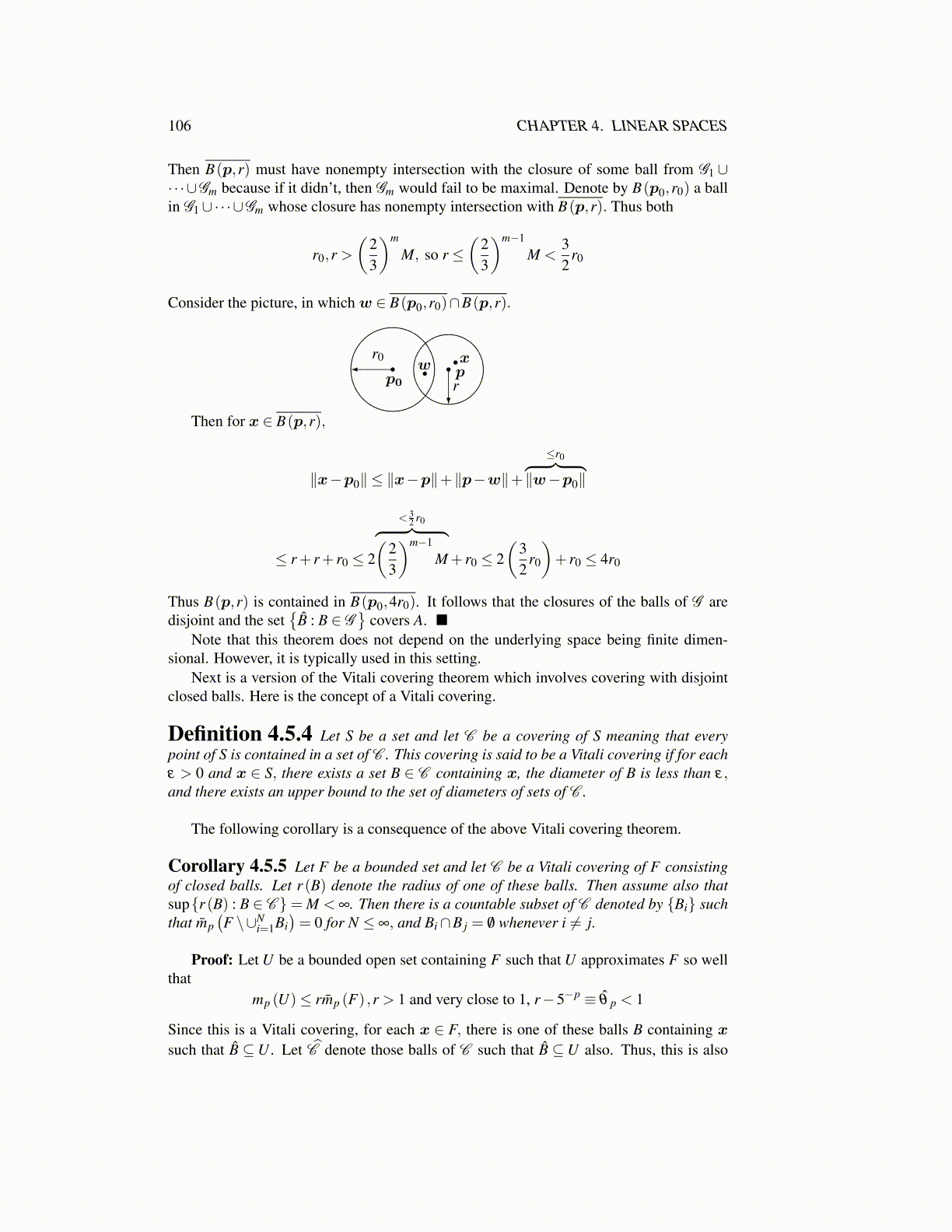
106 CHAPTER 4. LINEAR SPACES
Then B(p,r) must have nonempty intersection with the closure of some ball from G1 ∪·· ·∪Gm because if it didn’t, then Gm would fail to be maximal. Denote by B(p0,r0) a ballin G1∪·· ·∪Gm whose closure has nonempty intersection with B(p,r). Thus both
r0,r >(
23
)m
M, so r ≤(
23
)m−1
M <32
r0
Consider the picture, in which w ∈ B(p0,r0)∩B(p,r).
wr0
p0 rpx
Then for x ∈ B(p,r),
∥x−p0∥ ≤ ∥x−p∥+∥p−w∥+
≤r0︷ ︸︸ ︷∥w−p0∥
≤ r+ r+ r0 ≤ 2
< 32 r0︷ ︸︸ ︷(
23
)m−1
M+ r0 ≤ 2(
32
r0
)+ r0 ≤ 4r0
Thus B(p,r) is contained in B(p0,4r0). It follows that the closures of the balls of G aredisjoint and the set
{B̂ : B ∈ G
}covers A. ■
Note that this theorem does not depend on the underlying space being finite dimen-sional. However, it is typically used in this setting.
Next is a version of the Vitali covering theorem which involves covering with disjointclosed balls. Here is the concept of a Vitali covering.
Definition 4.5.4 Let S be a set and let C be a covering of S meaning that everypoint of S is contained in a set of C . This covering is said to be a Vitali covering if for eachε > 0 and x ∈ S, there exists a set B ∈ C containing x, the diameter of B is less than ε,and there exists an upper bound to the set of diameters of sets of C .
The following corollary is a consequence of the above Vitali covering theorem.
Corollary 4.5.5 Let F be a bounded set and let C be a Vitali covering of F consistingof closed balls. Let r (B) denote the radius of one of these balls. Then assume also thatsup{r (B) : B ∈ C }= M < ∞. Then there is a countable subset of C denoted by {Bi} suchthat m̄p
(F \∪N
i=1Bi)= 0 for N ≤ ∞, and Bi∩B j = /0 whenever i ̸= j.
Proof: Let U be a bounded open set containing F such that U approximates F so wellthat
mp (U)≤ rm̄p (F) ,r > 1 and very close to 1, r−5−p ≡ θ̂ p < 1
Since this is a Vitali covering, for each x ∈ F, there is one of these balls B containing x
such that B̂ ⊆U . Let Ĉ denote those balls of C such that B̂ ⊆U also. Thus, this is also